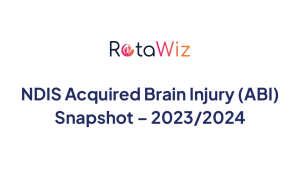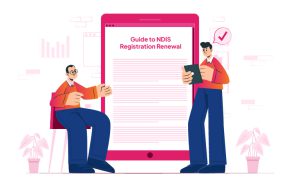4 July, 2025
NDIS 2025: How Providers Can Strategically Adapt to a Changing Funding Landscape
NDIS Latest News
5 min read
The National Disability Insurance Scheme (NDIS) continues to shape the future of disability support services across Australia. As 2025 unfolds, providers are navigating a period of major policy shifts, funding recalibrations, and operational reforms. These changes are not just budgetary adjustments—they represent a broader transformation in how disability support is delivered, funded, and managed nationwide.
For NDIS providers, this is a critical time to reassess service models, operational processes, and client engagement strategies. Understanding the evolving policy environment can help businesses remain compliant, financially sustainable, and participant-focused.
Why 2025 Is a Defining Year for NDIS Providers
Government policy cycles often bring incremental changes. However, 2025 feels different for the NDIS sector. The scope and pace of current reforms signal a clear shift towards long-term sustainability and efficiency across the scheme.
From tighter compliance mechanisms to stronger participant voice initiatives, the NDIS is recalibrating. Providers are seeing greater scrutiny on how funds are allocated, how services are delivered, and how outcomes are measured.
For many, this means adjusting to new reporting standards, refining service delivery models, and ensuring that their teams are equipped to meet both participant needs and regulatory expectations.
Adapting Service Delivery Models to Meet New Expectations
In the current landscape, NDIS providers must strike a balance between financial viability and delivering high-quality, person-centred care.
Here are a few key focus areas for providers in 2025:
- Outcome-Based Service Delivery:
Funding bodies and the NDIA are placing increasing emphasis on demonstrable participant outcomes. Providers should focus on clear documentation of how their services contribute to participants’ goals and wellbeing. - Operational Efficiency:
Administrative overheads are under scrutiny. Implementing technology solutions like rostering software, CRM platforms, and automated reporting tools is becoming essential for compliance and scalability. - Participant Empowerment:
The focus on participant choice and control is stronger than ever. Providers must offer flexible service options, empower participants to co-design their support plans, and stay responsive to individual preferences.

Workforce Planning in Response to Sector Demands
Workforce challenges remain one of the top concerns for providers in 2025. With increased demand for disability support workers, allied health professionals, and plan managers, organisations must rethink how they attract, train, and retain staff.
Strategic workforce actions for 2025 include:
- Upskilling Initiatives:
Providers should invest in continuous professional development. Areas like trauma-informed care, digital literacy, and person-centred planning are increasingly in demand. - Staff Wellbeing and Retention:
The risk of burnout remains high in the disability services sector. Offering mental health support, flexible work arrangements, and recognition programs can help retain skilled staff. - Inclusive Hiring Practices:
There’s a sector-wide push towards building a more inclusive workforce, including greater employment opportunities for people with disabilities. Providers who embrace inclusive hiring are likely to align well with sector values and government priorities.
Technology Adoption for Compliance and Efficiency
Technology adoption is no longer optional. The NDIS sector in Australia is moving rapidly towards digitisation, both in service delivery and back-end operations.
Top technology priorities for providers include:
- Digital Participant Management:
Maintaining digital records of service delivery, participant goals, and outcome tracking is critical. - Automated Rostering and Timesheet Management:
To meet audit and compliance requirements, providers are adopting automated rostering systems that track service delivery accurately and in real-time. - Plan Budget Monitoring Tools:
As participant plan budgets become more flexible, providers need tools to help clients track their funding usage and avoid overspending.
Strengthening Participant Relationships
Building trust and maintaining strong participant relationships will help providers thrive in 2025 and beyond.
Key strategies include:
- Proactive Communication:
Keep participants informed about changes that may affect their services, especially as reforms roll out. - Feedback Mechanisms:
Regularly seek participant feedback on service quality. This can help address concerns early and demonstrate commitment to person-centred care. - Flexible Service Models:
Participants increasingly expect services that fit around their lifestyle, location, and goals. Offering choice in service modes—whether in-person, telehealth, or hybrid—will help meet diverse needs.
Financial Planning and Risk Management
Given the broader push for cost containment at the scheme level, providers must adopt robust financial management strategies.
Actionable financial steps include:
- Scenario Planning:
Map out how different funding changes could impact your revenue streams and service capacity. - Diversification:
Consider diversifying services or participant segments to reduce reliance on a single funding stream. - Regular Compliance Checks:
Staying up to date with NDIA audit requirements and pricing changes will help prevent funding delays or clawbacks.
Collaboration and Sector Advocacy
Sector collaboration is increasingly important. Providers should actively participate in NDIS forums, engage with local networks, and contribute to policy consultations where possible.
By staying engaged with peak bodies like National Disability Services (NDS) or Disability Intermediaries Australia (DIA), providers can stay informed and influence sector direction.
This is also a good time to build partnerships with other providers—whether for shared training resources, co-delivered programs, or joint workforce initiatives.
Looking Ahead: Building Resilience for 2026 and Beyond
2025 is a pivotal year for NDIS providers. The operational, financial, and policy changes currently underway are setting the tone for the next phase of the NDIS.
Providers who take proactive steps—investing in workforce capability, embracing technology, enhancing participant engagement, and staying financially agile—will be best positioned to thrive.
While the policy environment remains dynamic, the core mission remains unchanged: delivering impactful, participant-centred services that improve lives across Australia.
By building resilience today, providers can look to the future with greater confidence.
Final Note: Streamlining NDIS Rostering and Compliance with RotaWiz
As providers prepare to navigate ongoing NDIS reforms and operational shifts in 2025, adopting the right technology can make a significant difference.
RotaWiz is a purpose-built rostering and workforce management platform designed specifically for NDIS providers in Australia. With automated scheduling, timesheet management, and real-time shift visibility, RotaWiz helps providers reduce administrative burden while ensuring compliance with NDIS pricing and service delivery standards.
For organisations looking to improve staff utilisation, reduce rostering errors, and stay audit-ready—RotaWiz offers an intuitive, cloud-based solution that grows with your business needs.


